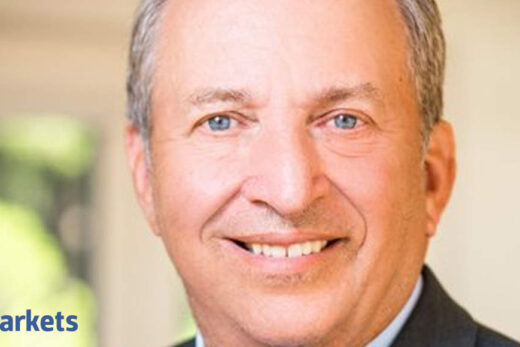How did you analyse the Fed commentary? How are the markets absorbing the commentary? Taper is a certainty but now a much calming voice is coming from the Fed. How are they reading the tea leaves?
The market is digesting the Fed commentary. We are all looking to see how they are going to behave and if and when they are going to stop this tapering process. My view on this is that the Fed has learnt its lessons with the 2013 taper tantrum. That had huge effects on markets in contagion. I think the Fed is being very deliberate in its approach. We are seeing a more hawkish stance and more hawkish tone.
The Fed is communicating in such a way to say we are going to keep off first on the accelerator and we are going to take a very cautious approach when we start moderating the extraordinary monetary and fiscal stimulus conditions that we are seeing. It gives the market more confidence if the move is more orderly. At the moment, we are looking at it in a very constructive fashion but we do expect tapering to come, I do expect that message to continue to be delivered and perhaps after Jackson Hole, we are going to see a clearer message from the Fed on when they really expect tapering to take place in consensus at the moment is broadly speaking early in 2022.
What are the macro indicators which you are reading carefully as somebody who watches all the asset classes closely to really understand which way the tide could be turning from here on?
There is obviously a vast announcement on macro data and what is critical is to sift through the noise and understand which of the data and which of the macro indicators are really driving market returns. We are seeing more developed markets emerging from lockdown and Covid we are seeing vaccination rates going high, certainly in the US and Europe. Looking at consumer behaviour, increase in spending levels, we are likely to see an increase in services data. The flip side to this is if we look across all asset classes and we look across the globe, the emerging market is seeing something of a resurgence in infections, most recently in Southeast Asia. We are watching closely to see what the impact of that is going to be on the progress of those economies.
What are your thoughts on the valuations right now? There has been a furious rally in emerging markets, in developed markets but there is argument that it is largely fuelled by easy liquidity conditions. What are your thoughts on valuations versus flows?
Monetary and fiscal conditions have created investing opportunities and we have seen strong performance across the board. More recently, the Emerging Markets have underperformed developed markets. It is relative to the liquidity. What for me is really important to look at is how you think about your timelines.
In the shorter term, we are going to be in a more uncertain period and in the months ahead we are likely to see more choppy market environments. Typically, you would expect the more volatile emerging markets to be greatly impacted by that. However, on a more strategic basis and selectively within emerging markets, we are going to see increasing opportunities offer excess returns relative to developed market positions. But that shift is between shorter term tactical versus more strategic positioning.
In this light how much probability would you assign to a)whether taper would actually start from the middle of FY23 and b)when in your view would risky assets actually start factoring that in?
This is the question we ask ourselves on a daily basis as investors and as I mentioned earlier the central view is tapering is in the pipeline. It is likely to be moderated. We are not expecting to see any huge shocks but it is probably coming in the early stages of 2022. That is our base case at the moment.
Now how is this likely to impact markets? It is all a question of the process of that tapering and how resilient economies and growth are at that time. We have seen extraordinary growth rates and this is likely to continue through 2021 and early 2022 and what we are going to see is a moderating of that growth as the impact of monetary and fiscal stimulus wanes. What is going to be critical for risk assets is what the velocity of that change is, how accommodating things can remain and, of course, as the global economy goes back to a more open stance, if consumer driven growth can continue. Continue to watch earnings and as ever keep an eye on the absolute value of your risk assets relative to the global growth rates.
How are you really assessing the quality of growth? China seems to be showing it slowing down, US is chugging along very strong. In terms of growth, which will be the biggest, strongest engine? Also what is the quality of growth in emerging markets like India?
Yes, this is one of the things that we are wrestling with and our macro team regularly provides updates on their views on this. Growth continues to run at historically high levels and this is going to moderate. In terms of the macro environment, if we are going to see the impacts of monetary and fiscal stimulus moderate somewhat, then by definition I would argue that we are probably at peak macro, which is the most accommodative environment, more supportive of risk assets. We are also starting to see divergence across the globe in terms of quality of growth and what those drivers of growth are.
In the US, there has been a huge amount of talk around the reflation trade and whether or not inflationary pressures are embedded within the economy. Our view is aligned with the Fed that this inflation is transitory. I expect inflation to moderate as we go forward back towards targets.
If I look across to Asia — the emerging markets and India — China is obviously a key driver. We are watching credit conditions very carefully because there has been a slowdown in the impetus there. However, there is plenty of dry powder dry, particularly in China and that can be addressed if there are any signs that the growth rate is losing sufficient velocity.
India still offers some very attractive investment opportunities — emerging from Covid, emerging from lockdown, getting consumer spending back on board to drive that growth and increase the velocity of money. Those are going to be the factors that will continue to give us confidence that there are outsized growth opportunities in those markets.



